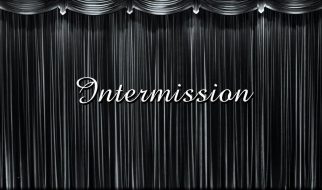
I used to tap dance as a kid, and I still have a lot of affection for the musicals of the Golden Age of Hollywood. I recently saw Royal Wedding, the Fred Astaire and Jane Powell musical from 1951 most famous for the iconic scene in which Fred Astaire dances on the ceiling.
The film stars Astaire and Powell as a brother-sister performing team who travel to England for Princess Elizabeth?s wedding. Astaire was 51 when this was filmed to Powell?s 22, but if you can get past that, the two are surprisingly convincing as siblings. Both are committed to the showbiz life and neither is the least bit interested in getting married or settling down, but both just so happen to fall in love on the trip, Astaire with a dancer played by Sarah Churchill, daughter of Winston Churchill himself, and Powell with a British lord. Interestingly, Fred Astaire really did have a career of over 25 years dancing with his real sister, Adele, who left the stage to marry a British lord of her own. Will the two couples get together? I think we know the answer.
That description may not sound too interesting, but these movies are just an excuse to show off the leads? singing and dancing skills. On this front, we have a great number in which Fred Astaire, annoyed that his sister is late to practice, dances with another partner instead.
Later, the two try to do a little performance on the ship to England but run into some trouble.
And of course we get Fred Astaire?s famous dance on the ceiling.
I have to give Jane Powell a lot of credit. She came late to the production to replace Judy Garland due to her repeated absences. She didn?t have much dancing experience but trained so hard that she was able to pull off all of her routines and even impress Astaire. Having said that, it?s Astaire who steals the show dancing-wise, as you can see for yourself above.
To accomplish the ceiling dance, a room was built inside of a steel cage inside of a 360 degree track to physically rotate the room while the camera was kept still, creating the illusion.
Now we can get to what I really wanted to talk about. I said earlier that the story isn?t important for these movies, but the famous ceiling dance is given a little bit more emotional resonance from the script. Much earlier in the movie, When Astaire is having his first date with Sarah Churchill?s character, she explains how she got into dancing.
Astaire: Do you like to dance?
Churchill: Yes, Yes. It?s hard work but it?s fun.
Astaire: What made you decide to dance?
Churchill: Oh, a very silly reason
Astaire: How silly?
Churchill: When I was eleven I fell in love with a boy much older.
Astaire: Twelve?
Churchill: No thirteen. His name was Alonzo. And I was so happy that suddenly all I wanted to do was dance. So I figured that if I danced when I was happy, I should be happy if I dance. Is that silly enough?
Astaire: I think so.
Churchill: I felt so good about Alonzo I used to close my eyes and pretend that I could dance all over the floor, walls, even the ceilings.
Astaire: If you ever learn to do that, I could get you a very good booking.
As you can see, Astaire?s dance shows that he remembered what she said and relates to her, showing the connection between them as well as how happy she makes him.
Moreover, at this point in the movie, Churchill?s character is engaged to a man in America, and though she loves Astaire she?s unwilling to break off the engagement. With his time in England drawing to a close, Astaire?s situation seems to be hopeless. Yet by sheer strength of will, he has done the impossible. If he can dance on the walls and ceiling (albeit presumably in his imagination rather than literally) perhaps he can do the impossible and salvage this romance.
Of course, the two lovebirds get together in the end. The fiancee in question has already married someone else, leaving Churchill free to pursue Astaire without the conservative 1951 movie-going audience thinking she?s done anything wrong.
The less developed and more interesting (to me) conflict was with Powell?s character. She thinks settling down with her British lord means giving up her career, and Astaire is similarly reluctant to break up the team, even though he floats the idea of finding another partner, perhaps his new love. However, during the titular royal wedding the two are so moved by emotion that they seek out their paramours for a double wedding on the spot. The film ends there, leaving the question of what will happen to Powell?s career unanswered, though based on what happened to Adele Astaire we can make a guess.
Having given this movie a lot of praise, you might be surprised to find that I overall didn?t like it very much. For every stunning song or dance number like the ones above there is one that is forgettable. The story drags and the two love interests aren?t very interesting. It?s only 93 minutes, but it felt like a lot longer while I was watching. The dialogue quoted above adds resonance to the ceiling dance number, but that resonance is dulled by the fact that there is what feels like two hours between those scenes of lifeless material without anything to strengthen that connection between those scenes.
If you?re a fan of classic musicals like this, the movie is worth sitting through for those three numbers alone, as well as a few others, which is probably why this movie and many of its contemporaries didn?t put much effort into the story. But now you don?t have to sit through a lackluster story to get to the good stuff; all you have to do is find the right clip on YouTube. It?s a shame too, because as the ceiling dance above shows, no matter how good a musical number is, its proper placement in a larger story that you care about can make it have much more of an impact.


